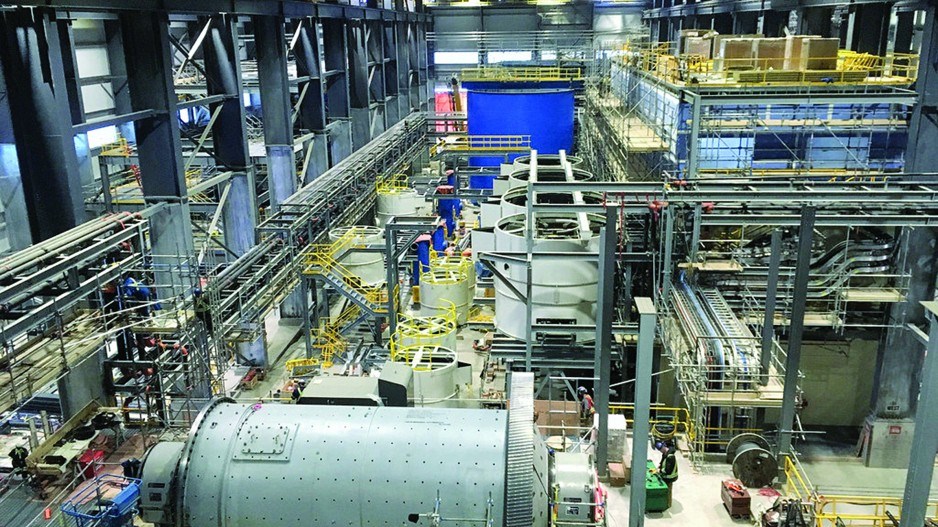Any day now, B.C.’s newest mine, the Pretium Resources Inc. (TSX:PVG) Brucejack gold-silver mine north of Stewart, B.C., is set to begin pulling ore out of the ground.
The new underground mine powered up on March 31 and is now in the commissioning stage, a few months ahead of schedule. The multimillion-dollar question now is how consistently the mine will be able to produce high-grade ore – an unknown that has dogged the project since 2013, when one consulting firm questioned the company’s reserve estimates.
“The underlying issue has been, and potentially will continue to be, the issue about the underlying resource,” said Joe Mazumdar, a geologist and analyst for the weekly mining publication Exploration Insights. “And that will only get resolved as they mine it.”
One of the remarkable things about the project is how fast it came together. Equally remarkable is that it was financed during one of the most protracted mining downturns in history, when few investors were putting money into new mines.
Built at a capital cost of $1 billion, the new mine will employ roughly 500 workers and is projected to produce roughly 500,000 ounces of gold for the first 10 years, with an estimated mine life of 18 years. Pretium received a provincial environmental certificate in March 2015, and just two years later the mine was in the commissioning stage.
Compare that with the New Prosperity mine, which received a provincial environmental certificate in 2007 and still is nowhere close to being built, due to a host of environmental and First Nations concerns.
Pretium CEO Joseph Ovsenek admits Brucejack inspires some awe within the mining community because of how quickly it came together.
“We’ve had a lot of commentary from people saying, ‘Jeez, it’s amazing how fast you have moved the project forward from discovery,’” said Ovsenek, who took over as CEO in January.
So how was Pretium, which went public in 2010, able to get a mine built in B.C. so quickly, when other projects have languished for a decade or more?
Ovsenek said Brucejack’s fundamentals have a lot to do with it. It has high-quality ore grades, and a seasoned management team that includes founder Robert Quartermain, the company’s executive chairman and former CEO.
It’s also nowhere near a fish-bearing lake or river, meaning the project avoids what could have been a major environmental hurdle.
The mine required no tailings dam because some of the tailings will be going into a lake that has no fish in it.
“It’s high quality, from a mining perspective, environmentally it’s a very small footprint, and no tailings dam,” Ovsenek said. “We’re putting tailings into a lake and there’s no fish in the lake, and no fish for about 23 kilometres downstream.”
But Pretium also took pains to work with the local community, including First Nations, early on and get them on board.
“We engaged local communities from the outset, local First Nations,” Ovsenek said, adding many locals had worked on Brucejack during the exploration stage.
“Right from the outset, we brought in a lot of local people to help us move things forward, so I think that helped us on the permitting side because we had a lot of local support,” he said.
The project has not been without controversy, however. A company called Bear Creek Contracting is suing the company subcontractor over the construction of a transmission line, saying the company, Rokstad Power, owes it $14 million.
It’s a dispute that is between Rokstad and Bear Creek, Ovsenek said.
And in 2013, a highly respected mining consulting firm, Strathcona Mineral Services Ltd., withdrew as a consultant after it disagreed with the methodology being used to estimate the project’s resources. Pretium’s stock fell 30% on the news of Strathcona’s departure.
Mazumdar said there is no question that Pretium has a seasoned management team behind it and that Brucejack has very high grades of gold.
The question is just how consistent the ore bodies are. A high degree of variability could make mining the deposit a bit hit-and-miss.
“I’m not sure if they’re going to get what they think they’re going to get,” Mazumdar said. “That’s debatable. But there’s only one way to find out – it’s to actually mine it.”
The Brucejack property was one of two that Quartermain acquired in 2010 for $450 million from Silver Standard Resources Inc. (TSX:SSO), a company that he headed as CEO.
The other was the Snowfield project, a larger but lower-grade gold-copper deposit adjacent to the proposed KSM mine project. Ovsenek had also been with Silver Standard and has been with Pretium since the beginning.
The downturn in mining that followed a fall in commodity prices around 2011 worked in the company’s favour.
“Because of the downturn in the mining space, there were a lot of good people available so we managed to hire a lot of good people,” Ovsenek said. “Because of the quality of the project, we’ve attracted great people and have been able to finance the project when a lot of other people couldn’t raise money.”
Brucejack is the third greenfield mine to be built in B.C. in four years. In 2013, the Mount Milligan copper-gold mine became the first new greenfield mine project to open in B.C. in more than a decade, followed by the new $500 million Red Chris copper mine in 2015.




